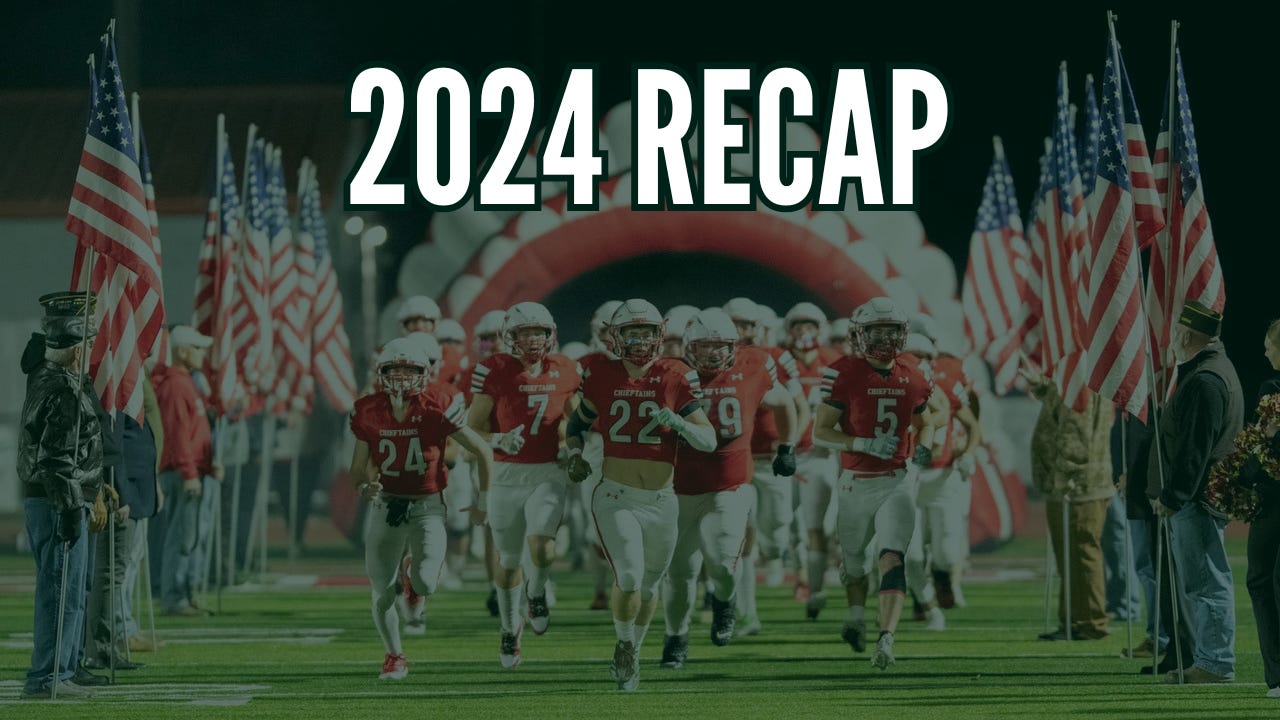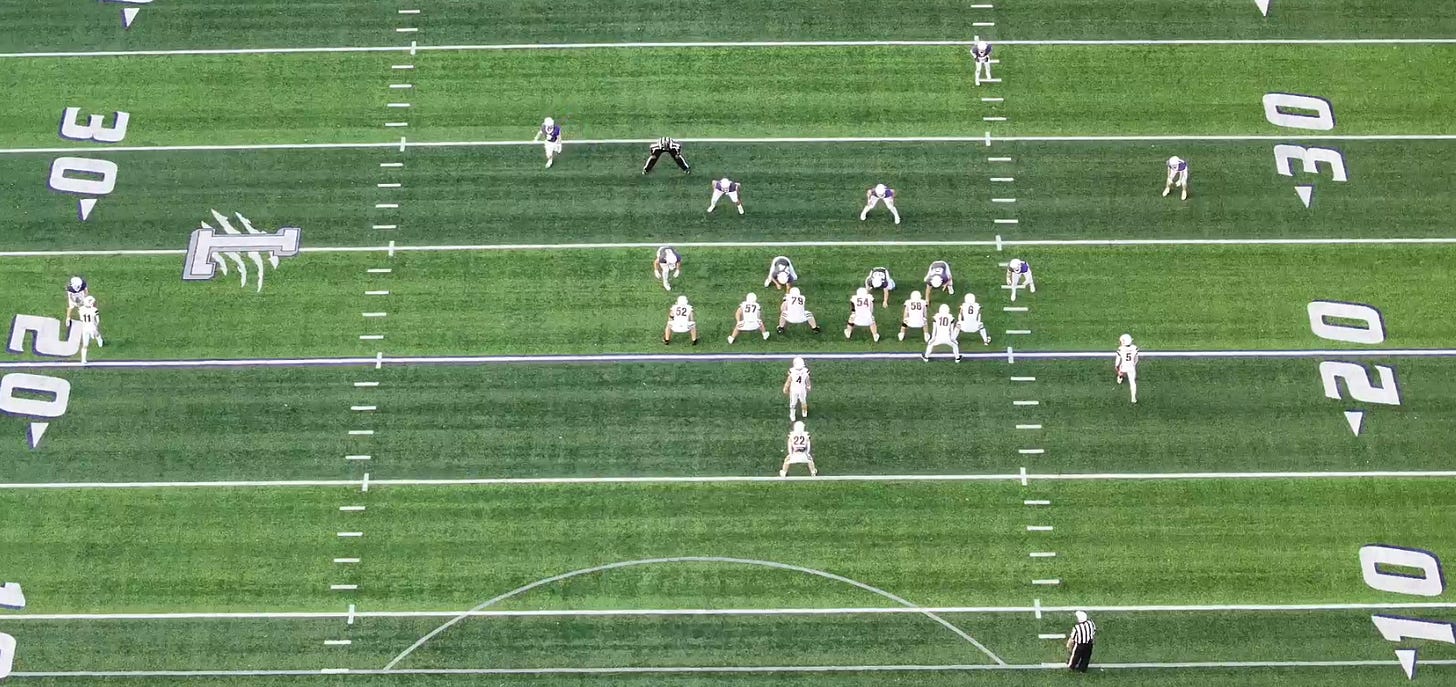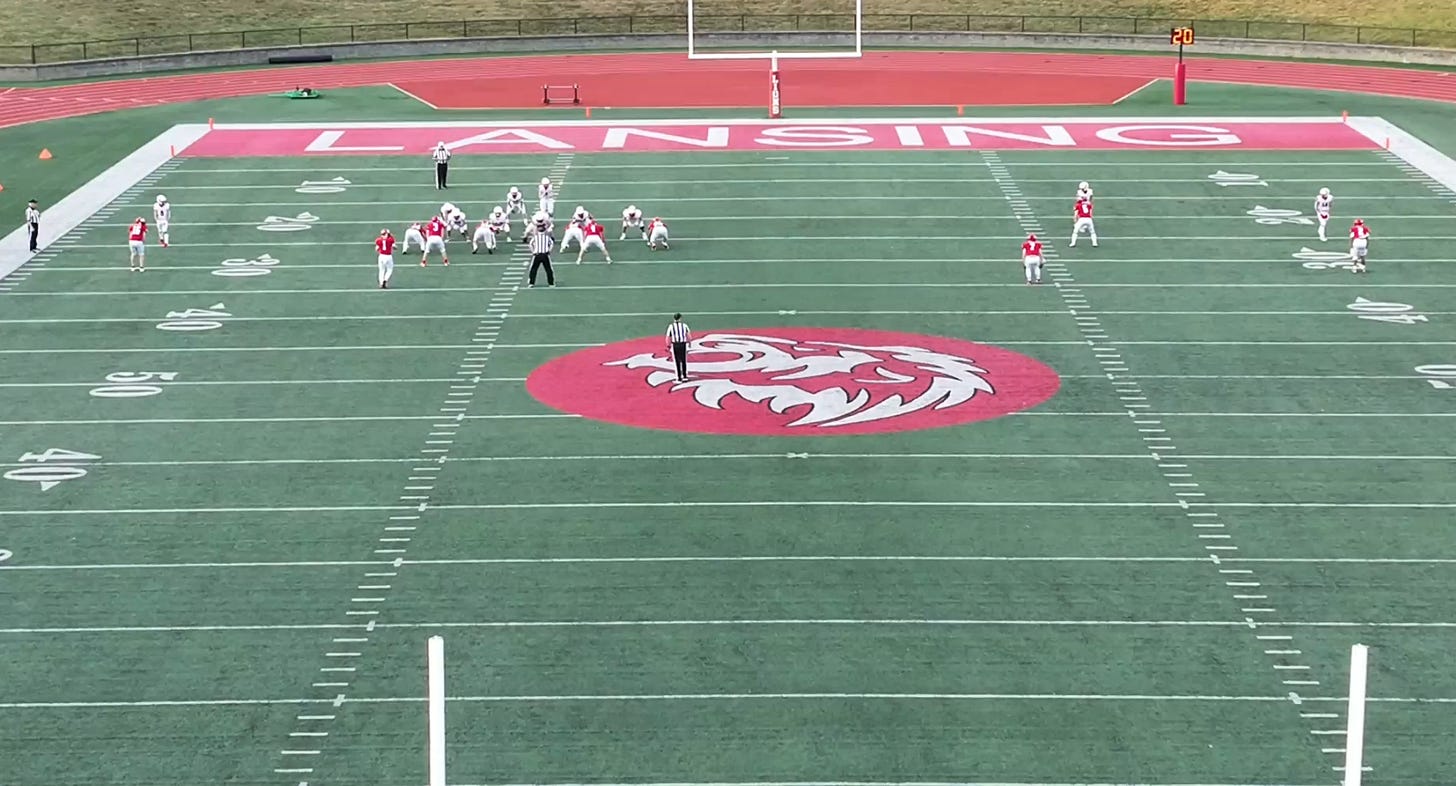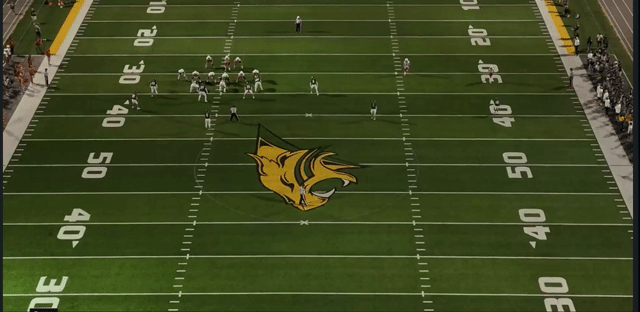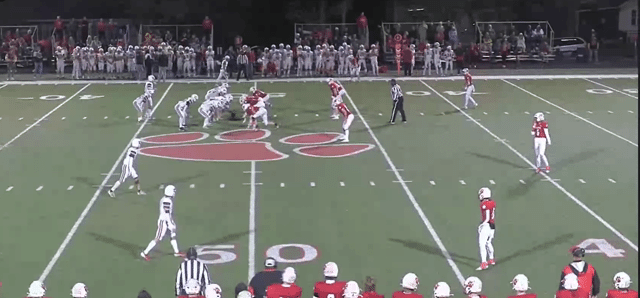2024 Coaching Recap
A look back at the valuable lessons learned from this past season.
The 2024 season is in the books, and we were fortunate to go on another deep playoff run. For the 2nd straight season we made it to the semi-finals.
Though it looked similar to our previous season on paper, the journey was completely different. This concluded my 16th season coaching football (3rd as a HC), and one thing I’ve learned is that each season is unique.
This week I’m taking a break from offensive breakdowns to share some of the humbling lessons I learned this season.
1. You must be able to adjust to your kids.
Those who have followed me for a while know I love the Wide Zone. It has been our staple for years and produced 3 2,000-yard backs and countless school records. All summer and into fall camp it was still our number 1 play.
Then we started 0-2, with mediocre offensive performances I had to take a hard look in the mirror. Though Wide Zone was still creating some explosive plays, it was inconsistent. Our line just wasn’t executing it like we’d had in the past.
Then injuries started to mount, and our offensive line was continually being shuffled around. It was tough for me because Wide Zone had been our identity for so long.
After week 2 we decided to put a higher priority on our gap schemes. We didn’t throw out Wide Zone, but it became a complement to counter as opposed to our foundation.
This seems like semantics, but when your #1 play changes, the way you structure your entire offense changes. It changes how you are putting the defense in conflict. It took some time to figure some of those things out, but after starting 0-2, we finished the regular season 5-3 (ended 8-4).
2. Admit when you’re wrong
As we prepared for the season, I thought our offensive line was going to be the strength of our offense. We had 5 returners who had either started or seen significant time. Early in the summer, I decided to switch from 11 personnel spread sets to a multiple 12 personnel look. We were still using the same plays, just a different presentation. We started running more condensed sets and motions.
There is nothing wrong with this approach if it fits your team, but it turned out, it didn’t fit ours. I was leaving speed on the sideline, and we struggled to be explosive.
Then, like I mentioned before, we had some offense linemen miss some games. We were having to start more inexperienced guys, and trying to run an offense that put more stress on them.
I had to admit that my personnel switch was the wrong move, and we had to change course.
So along with putting wide zone down the list, we got out of 12 personnel and back to our 11 personnel spread sets. We used wide splits by our receivers to create a clearer picture for our quarterback.
We found that the condensed sets and motions often left a muddy picture for the quarterback, and he struggled to identify his reads and where to go with the ball.
We didn’t add or change any of the concepts, we just emphasized the ones that were successful for us and changed formations.
The results were immediate. After averaging 213 yards and 17 points in the first two games, the next 3 games we averaged 386 yards and 33 points.
3. Get your best kids the ball more
This seems obvious, and it was easy when our best player was at running back or quarterback. This season our most explosive player was a receiver. Opposing teams game planned to take him away, and early in the season, I didn’t worry about it. I thought if they used 2 guys to defend him, then that allowed other guys better match-ups.
That may be true, but we were missing out on the opportunities that having the ball in his hands gave us. After switching back to 11 personnel, the next transition was to find ways to get him as many touches as possible.
We moved him all around. He would line up in the slot, as the outside receiver, and even in the backfield. This made it difficult to bracket, or put their best defender on him.
This paid huge dividends, especially down the stretch. He had a monster playoff run with 338 yards receiving and 6 touchdowns.
4. Rep your screens often
We’ve always had RPOs built into our running game. Early on this season, we were struggling to execute them. We would rep them in our individual time, but it was hit or miss during team.
We added a 5-minute block in the middle of our team period where I would tell the quarterback he must throw the RPO every play regardless of the look. After implementing these sessions, he gained confidence and began to throw them any chance he got the right looks.
This created big plays all season, but none bigger than the 2nd round of the playoffs. We had two 50+ yard touchdown passes off of our Key screens.
Final Thought
My biggest take away is that you must create an offense that is adaptable to the many changes year to year or even day to day in coaching at the High School level. Most of us aren’t out recruiting to fit our system, we get what we get.
I’m not saying to change offenses every year, but having a system that can adjust to different personnel while using the same cocnepts. There are many different ways to do this, but I believe it is neccesary to sustain success.
Now that the season is over I will be making more posts specifically on our offense along with deep dives of the top NFL and College offenses.
I’ll detail our best concepts including:
Counter and how it pairs with Wide Zone
Quarterback run game
Deep Choice Passing Game
Why and how we utilize wide splits from our receivers
Dagger passing series
Executing quick screens attached to runs
How we implement RPOs
As always, feel free to reach out anytime if you have any questions.



